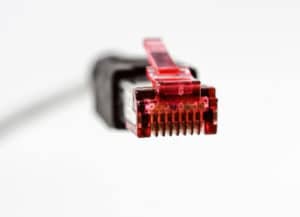Get in touch with us today to find out how can we help you.
First, What is The Difference?

Before you can make an informed decision on CAT 3, CAT 5e, CAT 6, CAT 6a and CAT 7, you must first understand the difference between them. This white paper is meant to be more for the laymen and business owner who would like to make an informed decision on cabling projects. Therefore, I am removing as much technical jargon as possible.
Generally speaking, CAT 3 is for older digital or analog signals only. Basically, this means if you have computers or VoIP, you will not want to use CAT 3. CAT 3 will only transmit data at a maximum speed of 10 Base-T. These are speeds that have been considered obsolete for over 10 years.
CAT 5e allows up to 1000 Base-T speeds. This speed is also known as “Gigabit”. This speed matches the current standard shipment for the speed of your NIC (network interface card) in your computer and the speeds of most commonly shipped data switches. CAT 5e can certify for 1GB for 100 meters (330 feet for us Americans).
CAT 6 allows data to transmit at 10G Base-T or 10 Gigabit. This is 10 x’ the speed of CAT 5e. For standard CAT 6 this speed is good for 55 Meters (about 180 feet) and 100 meters for CAT 6a. Below is table to help with the differences.
| CAT 5e | CAT 6 | CAT 6a | |
| Speed | 1 Gig | 10 Gig | 10 Gig |
| Distance | 100 meters | 55 meters | 100 meters |
| Cost | $ | $$ | $$$ |
What is the most common installation?
For this article, I am dismissing CAT 3 (too old) and CAT 7 (too new and expensive) in my recommendations. The shipment of both of these is also extremely low. Currently, it is almost a 50/50 split on CAT 5e and CAT 6 cabling installations in our Houston, Austin and San Antonio markets. CAT 6a would rank third in shipments and installs.
Great- So When Do I use What?
There are many variables that go into whether you want to use CAT 5e or CAT 6 cabling. You will want to consider how long you will be in the building, where your data is located, how much data you transfer and how much you rely on wireless vs. wired transmissions. Finally, we will want to cover what network equipment you use, age of that equipment and cost considerations.
How long will you be at this location?
Technology is always changing. Cabling is infrastructure and with data you can only move as fast as your slowest link. If you sign 5 year leases and move every 5 years, then you can take a higher risk and perhaps install CAT 5e. It would be highly unlikely that technology speeds would surpass you so much in the next fire years that it would harm your business with this decision. If your company is planning on staying at your current facility for 10 years or more, we need to consider future proofing your environment with a CAT 6 or 6a deployment. With the above being said, we still have several other factors to consider.
Where is your data located?
Remember my above comment about moving as fast as your slowest link? Well, if your data is in the cloud and you have a 100 Mb Internet pipe, then ALL users are bottle necked to that 100 Mb Internet pipe. The Internet has become your slowest link. So, if you install 5e at 1000 Mb per second, it is 10 times faster than your slowest link. Furthermore, your slowest link is shared between all of your users. This means each users is probably operating at 10 Mb or so. In this scenarios, I would be more than comfortable recommending CAT 5e. Now, please keep in mind that I am saying if ALL of your data is in the cloud. If you only have e-mail in the cloud and a other applications in your office, then this recommendation may change.
How much data do you transfer?
I know, this is the one everyone has a problem answering. Data usage is something most people are not measuring. Sometimes we just have to go with our “feel” on how slow things are moving. If you want a more thorough analysis, you could always ask your IT department or outsourced IT company for their considerations. ICS has our own Managed IT department that can assist you with this analysis if needed. Just contact us here and we would be more than happy to assist.
How much do you rely on wired transmission?
As wireless becomes more and more common, some companies do not realize how many people are bypassing their wired connection. Many smaller companies are almost all wireless. If you feel your company may fit into this environment, ICS also carries a full line of Aruba and Adtran Bluesocket wireless solutions. From developing wireless coverage maps, to security and installation, ICS can assist you with your new wireless solution if you need the assistance.
Will my data equipment handle CAT 6 or CAT 6a?
If you just purchased new data switches, find out the equipment specifications. New switches generally stay in production from 3 to 5 years. If you just bought gigabit POE switches, then you cannot transmit data faster than 1 gigabit. It goes back to only being able to move as fast as the slowest link. Since your switches are restricted to 1 gigabit, then it does not matter if you install CAT 6 or CAT 6a. You will never transmit data over 1 gig. If you are renting and plan on moving after 5 years, then CAT 6 definitely does not make sense. You will probably upgrade your data switches during the move and can upgrade the cabling at the same time.
If you are someone who keeps your data switches until they die and do not perform replacements on a regular schedule, then CAT 6 may not be appropriate for you either.
Does CAT 5e or CAT 6 cost more?
Since CAT 6 has higher speeds, it does cost more. Basically, the higher the number after the word CAT, the higher the price of the project. Typically there is a 10% to 20% difference between CAT 5e, CAT 6, CAT 6a and CAT 7. You are reading that correctly, currently CAT 7 can be a 40% to 60% premium over a CAT 5e installation. That premium accounts for cabling, labor and increased equipment costs that operate with the CAT 7 cabling.
So it sounds like you think everyone should use CAT 5e?
Absolutely not! As I have reviewed this blog, I realize I have dismissed CAT 6 in most cases. I am actually a big fan of CAT 6 and prefer future proofing a company. Having to cable a facility that is occupied is disruptive and expensive. If you meet the following criteria, I definitely recommend CAT 6. If you would like for ICS to look at your specific scenario for CAT 6 or CAT 5e data cabling installation in Houston, Austin or San Antonio, please contact us.
- You will be in your office for over 5 years.
- You upgrade your IT technology on a regular schedule.
- Most of your data resides in your office on servers.
- Most power users are on wired connections.
Other considerations for your cabling project
In the end, you can make a great decision on whether to use CAT 5e or CAT 6, but if you do not use a reputable company it will not matter much. Some people over simply cabling and therefore go with the cheapest solution. Here are some things to consider:
- Cabling for CAT 5e and CAT 6 is regulated. There are manufactures that advertise CAT 5e or CAT 6 but do not meet the regulatory requirements of the cabling. This is called counterfeit cabling. It is important that you avoid and understand what this means. Here is a simple write-up explaining counterfeit cabling and its consequences.
- There are people that will string a cable from point A to point B at a very low cost. They typically do not understand EMI (electrical magnetic interference) and other specifications that can effect the performance of the cabling. They generally use the equipment listed in item 1 also. Use a professional cable company that can test and certify your installation. The last thing you want is that very expensive IT person troubleshooting a cable problem on moving day!
- Proper labeling is on the most important parts of a cabling job. Once furniture is installed, there is nothing more frustrating than troubleshooting a cable behind a 300 lb desk. Proper labeled cabling keeps your IT staff focused on keeping the network operating, not on chasing a cable.
If you need us, we would love to help. Just reach out to us at icsnew.wpenginepowered.com and keep in mind that we also do VoIP, Managed IT Services, Access Control and Surveillance cameras!

ICS is a Texas-based 40-year-old technology company specializing in Managed IT, VoIP, Video Conferencing and Video Surveillance solutions for US and International businesses. ICS has over 4000 regional installations and specializes in multi-site businesses between 25 and 2500 employees. ICS’s customers enjoy the experience of ICS’s Total Care program which provides clients flat fee services with obsolescence and growth protection. Whether a customer elects to deploy their IT, Video Conferencing or VoIP in the cloud or on the customer’s premise, ICS can provide a full turn-key solution for our clients under one flat monthly fee.



